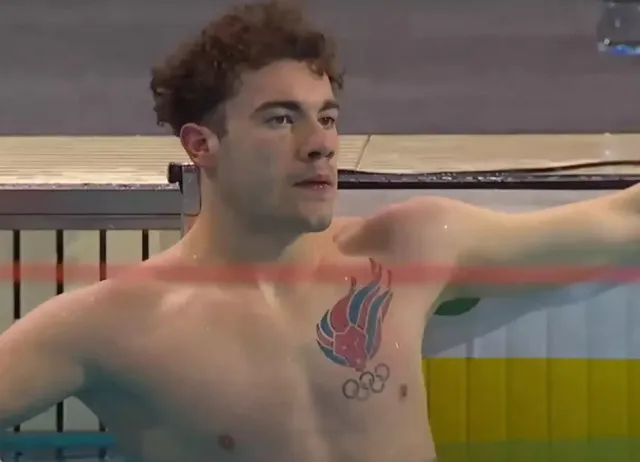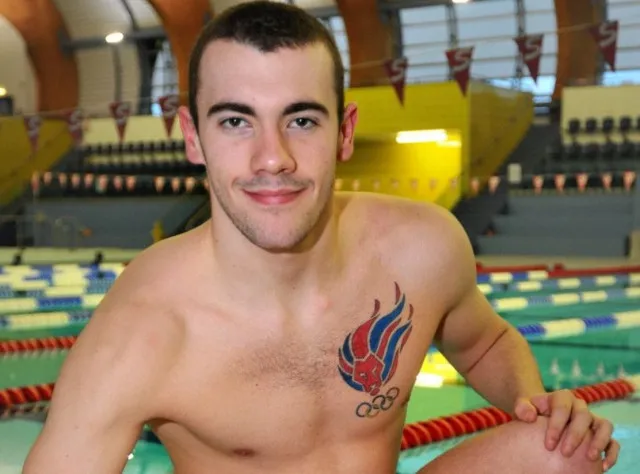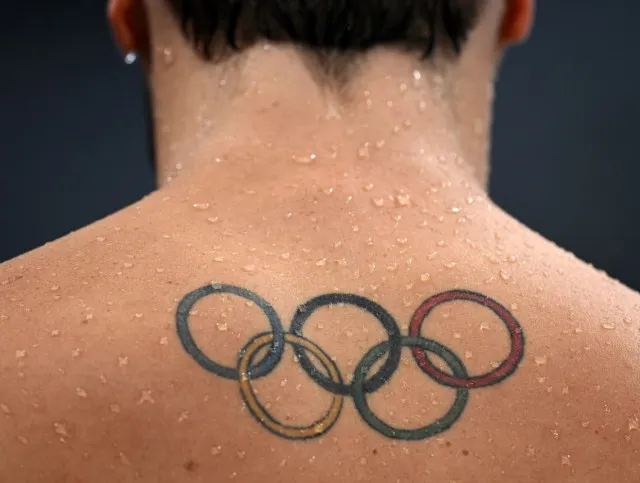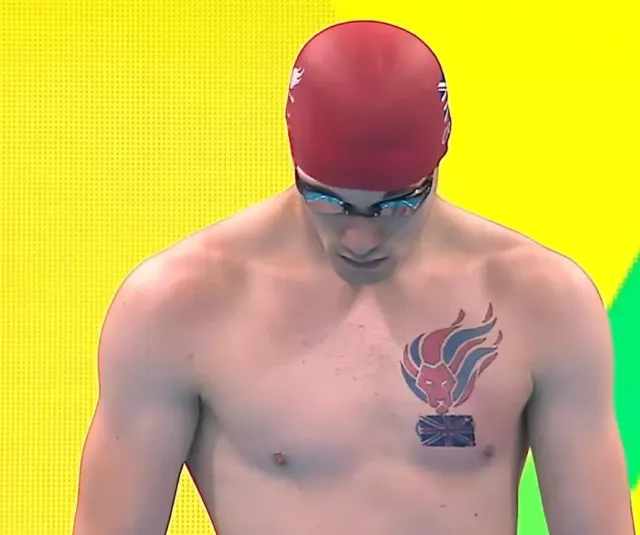An athlete, previously disqualified for displaying an Olympic ring tattoo, had to cover it up to participate in the Paralympics.
Lately, an athlete faced disqualification at the Paralympics due to a visible Olympic ring tattoo, prompting him to cover the tattoo to compete.
This incident has raised questions about the regulations and policies surrounding tattoos and symbols in major sporting events.

Athlete once disqualified over Olympic ring tattoo
As the 2024 Paralympic Games in Paris draw near, athletes around the world are getting ready to compete at the highest level.
However, one British Paralympian faced challenges on his road to the games because of an unexpected accessory: his tattoo.
In 2012, Josef Craig, a British swimmer, won a gold medal in the 400m S7 freestyle event at the London Paralympic Games.

Craig wanted to celebrate his achievement, so he got a tattoo.
It features the Paralympic GB lion logo on his left chest. The Olympic rings are located just below the lion.
However, Craig didn’t know this decision would come back to haunt him in the years to come.

Why do IPC ban athletes from having Olympic ring tattoo?
The International Paralympic Committee (IPC), the governing body for the Paralympic Games, has a strict policy against “body advertising” during competition.
The policy bans athletes from using their bodies to display or promote any logos, symbols, or branding, including the Olympic rings.
When Craig returned to competition after the 2012 games, he faced a dilemma.
To comply with IPC regulations, he had to cover the Olympic rings portion of his tattoo whenever he competed.

Failure to do so would result in disqualification.
The first major incident occurred in 2016 when officials banned Craig from participating in a race at the IPC European Championships.
Although he won his heat, he did not compete in the final because he left his Olympic rings tattoo uncovered.
“Body advertising is not allowed in any way whatsoever and that includes the Olympics rings,” explained an IPC spokesperson at the time.
“The athlete did not wear a cover and was therefore disqualified.”
Athlete had to cover it at Paralympics
To keep competing at the Paralympics, Craig found a way to work around the rules for the 2016 Rio Games.
He covered up the Olympic rings with a European Union flag sticker, allowing the Paralympic logo to remain visible.

The organizers accepted the compromise, and Craig won a bronze medal in the 100m freestyle S8 event.
“All teams are informed of the advertising policy at a technical meeting before the competition, so it wasn’t as if they had not been reminded about the rules,” the IPC spokesperson added.
Paralympic athletes cannot show the Olympic rings, even though they are important symbols.
The main focus must be on the competition and achieving Paralympic success, without any outside distractions or branding.